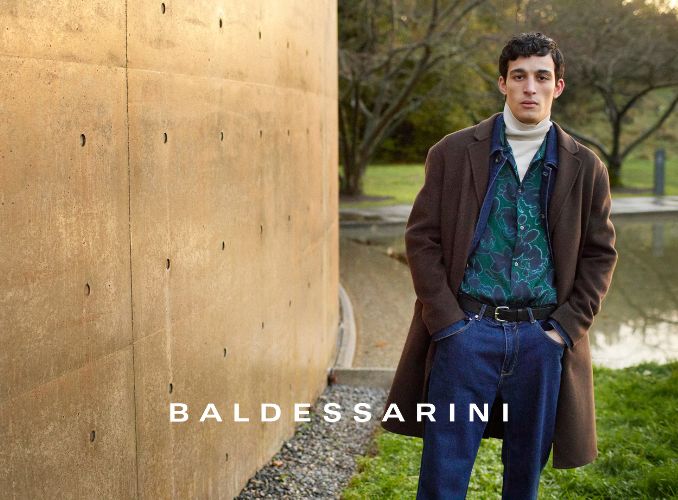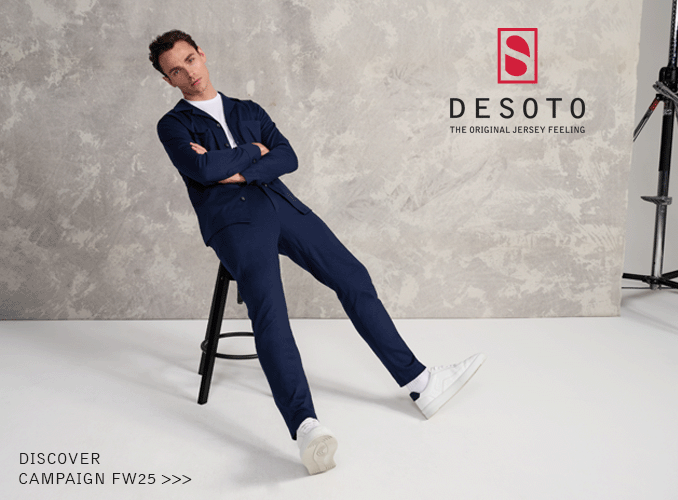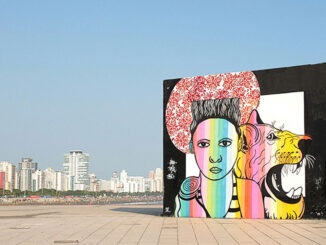
Autorin: Eva Westhoff What characterizes the fashion scene from Rio to São Paulo? Which designers, brands and newcomers should you keep an eye on? FASHION TODAY interviewed the Brazilian Lilian Pacce. The renowned journalist, curator and author of several books runs the fashion portal Lilian Pacce. She is also co-organizer of the exhibition “Brazil: Creating Fashion for Tomorrow” with a focus on ecological sustainability. The event will once again be part of London Fashion Week 2024 in September. It will be hosted in collaboration with the Embassy of Brazil in London, Apex and Malwee.

FASHION TODAY: You started working as a journalist in the late 1980s, focusing on fashion and reporting from the catwalks of the world – including those in your home country of Brazil. You did fashion courses at FGV at São Paulo and you lived in London for a time. Plus – you run your own fashion blog, among other activities. In view of your broad scope, from a local as well as an international perspective – how does Brazilian fashion differ from European fashion? Or to put it another way, are there distinguishing features?
Lilian Pacce: “I lived in London in the 90s and I came back in 2022 to do a master’s degree incuratorship at UAL (University of the Arts London/editor’s note), which I have already completed.Although European fashion exerts a great influence in Brazil, the Brazilian market appearing pretty much continental. However, we can well identify some strong characteristics in Brazilian fashion, suchas its tropical, colourful attitude and a highly sensual character.”
In 2016, you published the book titled “O Biquíni Made In Brazil” – not only a reflection on the European and Brazilian history of swimwear, but also a contribution to Brazilian cultural history as such. What role does beachwear play in Brazil?
“Brazil has about 8,000 km of coastline, not to mention waterfalls, rivers, freshwater beaches and even swimming pools. This relationship to beach life and bathing comes from the native peoples. Some of whom already wore what we call a ‘Tanga’ nowadays – derived from the Portuguese word tupi tanga = loincloth. However, these references are conspicuous by their absence in the narratives created by the global North, which only acknowledges the ‘invention’ of Louis Réard’s bikini, which strongly references the modelling of Marajoara loincloths indeed, that date back to the pre-Columbian period. This relationship with bathing and the hot climate means that swimwear is very present in everyday life. In many cities, you can sunbathe or swim in the sea during the working day or go from the beach to a restaurant or a friend’s house. This means that beachwear is somehow incorporated as an everyday item. In addition, many fads have arisen both from women’s own behaviour on the beach and from the amazing creations of swimwear designers.”
Which (menswear) brands are particularly renowned in Brazil? Which are internationally successful?
“We have brands with different styles: streetwear brands like CAVALERA and Lab Fantasma, as well as tailoring from the likes of Ricardo Almeida. I would highlight Misci, HANDRED, The Paradise, João Pimenta, Another Place, Richards, Reserva and many others. Of those that managed to go international, I believe that Pedro Andrade’s PIET and P. Andrade and Osklen are the most relevant and embody the essence of a sexy and relaxed Brazilian style, cool and casual, with strong sustainability attributes. Exporting fashion in Brazil is very complex, which makes it very difficult for brands to internationalize.”
Are there any newcomers you should know about?
“The answer depends on what we mean by newcomers. In addition to some designers mentionedabove, we can also talk about Dario Mittmann, NotEqual, Seu Maraca, David Lee and Caiio.”
What are the most important trends?
“I don’t believe in trends for the sake of it. I don’t believe in using this or that just because it’s trending. However, many brands are now proposing a gender-neutral clothing style, enabling men to be freer in their expression through fashion.”
In 2023, you were the curator of “Brazil: Creating Fashion for Tomorrow”. The event, which took place as part of London Fashion Week, shines a spotlight on Brazilian creators and innovators who are guided by socio-environmental values. The next edition will be in September 2024. How far has Brazilian fashion come in terms of sustainability?
“In terms of sustainability, Brazil has gone as far as the rest of the world. In other words, very little. Ihave just attended the Global Fashion Summit in Copenhagen and we see that the pain continues, butat least we have more accurate diagnoses and more awareness of the problems. Brazil CreatingFashion for Tomorrow 2024 will focus more on the social aspect, the S of ESG, highlighting femaleprotagonism in fashion, sustainability and innovation. We are selecting Brazilian brands led by womenwho collaborate with other women from communities or in vulnerable situations, as well as innovativematerials and technologies led by women, that have sustainable attributes.”
In 2020, São Paulo Fashion Week issued a quota stipulating that 50 percent of the models who walk there should represent persons of colour. Has the self-image of Brazilian fashion changed? What significance does ethnic or indigenous fashion have in Brazil?
“Once again, just like the rest of the Western world, the inclusion of black, indigenous and minoritized people in the fashion industry and fashion image in Brazil is very recent. Today, they are finally seen and can see themselves represented in fashion shows, fashion editorials and advertising campaigns. I believe this is the start of a journey that must be taken with strong determination.”




